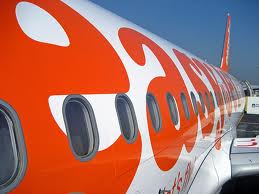· Total revenue up by 7.5% to £654 million
· Seats flown grew by 7.7% to 13.8 million and total revenue per seat was flat at £47.48. At constant currency revenue per seat grew by 0.3% as growth in underlying yields more than offset some weakness on ancillary revenues
· Passengers carried increased by 8.8 % to 11.9 million, with 59% of passengers originating outside the UK. The load factor increased by 0.9 percentage points to 86.7%
· Cost per seat ex fuel reduced by 2.9% excluding additional costs resulting from disruption caused by ATC strike action and severe weather
· In the quarter disruption from ATC strike action and severe weather cost £6 million and £18 million respectively and in addition led to lost contribution of £7 million. easyJet is working to recover a significant proportion of this through additional costs savings and revenue opportunities
· easyJet placed an aircraft order with Airbus in the period; with 15 existing A320 aircraft options converted to firm orders, 20 A319 contracted aircraft deliveries converted to A320 deliveries and secured options over a further 33 A320 aircraft bringing the total number of options held by easyJet to 42 aircraft
· easyJet’s position continued to strengthen with market share gains across Europe particularly London Gatwick, Paris Orly and CDG and Geneva
· Strong balance sheet with cash and money market deposits of £1,281 million (excluding restricted cash) and un-drawn committed financing facilities at favourable rates of $641 million as at 31 December 2010
Commenting on the results, Carolyn McCall, easyJet Chief Executive said:
“Against a difficult economic backdrop aggravated by severe weather and ATC strike action, easyJet was able to deliver a solid trading performance and grow total revenue by 7.5% to £654 million whilst improving its position in mainland Europe.
easyJet will always support its passengers when external events impact their journey but we call on governments to provide sensible legislation for airport regulation and air traffic control. The severe snow disruption of the past two years also highlights the need for airports to invest in the appropriate infrastructure to keep passengers moving.“












